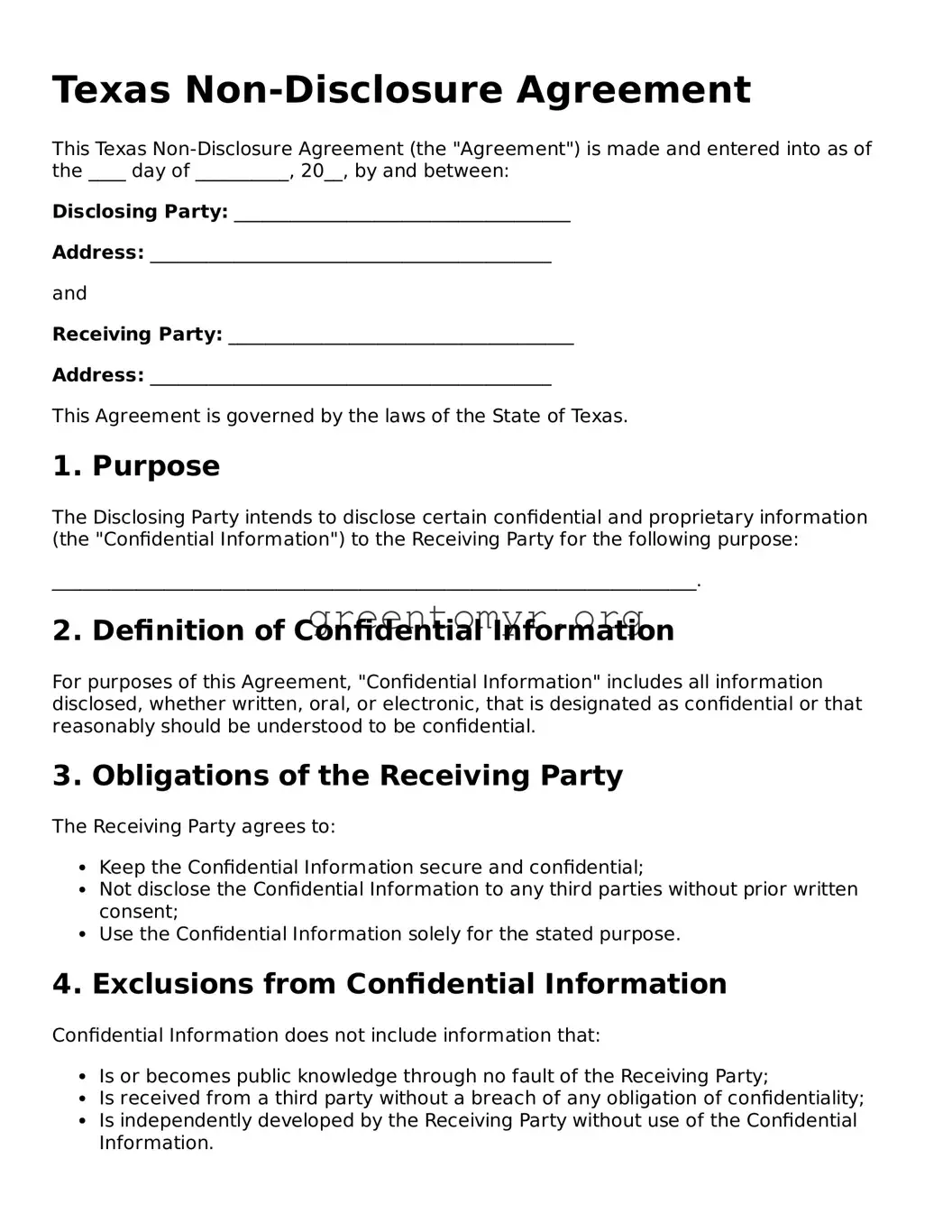Texas Non-Disclosure Agreement
This Texas Non-Disclosure Agreement (the "Agreement") is made and entered into as of the ____ day of __________, 20__, by and between:
Disclosing Party: ____________________________________
Address: ___________________________________________
and
Receiving Party: _____________________________________
Address: ___________________________________________
This Agreement is governed by the laws of the State of Texas.
1. Purpose
The Disclosing Party intends to disclose certain confidential and proprietary information (the "Confidential Information") to the Receiving Party for the following purpose:
_____________________________________________________________________.
2. Definition of Confidential Information
For purposes of this Agreement, "Confidential Information" includes all information disclosed, whether written, oral, or electronic, that is designated as confidential or that reasonably should be understood to be confidential.
3. Obligations of the Receiving Party
The Receiving Party agrees to:
- Keep the Confidential Information secure and confidential;
- Not disclose the Confidential Information to any third parties without prior written consent;
- Use the Confidential Information solely for the stated purpose.
4. Exclusions from Confidential Information
Confidential Information does not include information that:
- Is or becomes public knowledge through no fault of the Receiving Party;
- Is received from a third party without a breach of any obligation of confidentiality;
- Is independently developed by the Receiving Party without use of the Confidential Information.
5. Term
This Agreement shall commence on the date first written above and shall continue until the Confidential Information no longer qualifies as confidential or until terminated by either party with thirty (30) days’ written notice.
6. Miscellaneous
This Agreement constitutes the entire agreement between the parties regarding the subject matter herein and supersedes all prior agreements and understandings. Any amendments must be in writing and signed by both parties.
IN WITNESS WHEREOF
The parties hereto have executed this Texas Non-Disclosure Agreement as of the date first above written.
Disclosing Party Signature: __________________________
Date: __________________________
Receiving Party Signature: __________________________
Date: __________________________
